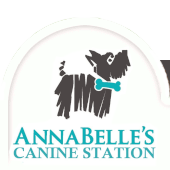 In the second of a multi-part series, Carol Hein-Creger, lead trainer at AnnaBelle’s, and Erinn Hadley, trainer and professional handler, and certified CGC evaluator, takes you through each of the CGC exercises and offers tips and guidance for practicing and for successfully passing a CGC evaluation.
In the second of a multi-part series, Carol Hein-Creger, lead trainer at AnnaBelle’s, and Erinn Hadley, trainer and professional handler, and certified CGC evaluator, takes you through each of the CGC exercises and offers tips and guidance for practicing and for successfully passing a CGC evaluation.
Test Item 2: Sitting Politely for Petting
This test demonstrates that the dog will allow a friendly stranger to touch it while it is out with its handler. With the dog sitting at the handler’s side, to begin the exercise, the evaluator pets the dog on the head and body. The handler may talk to his or her dog throughout the exercise. The dog may stand in place as it is petted. The dog must not show shyness or resentment.
Tips and Guidance:
You are to command your dog to “sit” for this exercise. I recommend that you courteously instruct the Evaluator to approach your dog from the side and to pet your dog under the chin or on its chest, in keeping with generally acceptable protocols of human/dog interaction. Under no circumstances should your dog be expected to tolerate a fast, direct approach from a stranger making direct eye contact with your dog, with the intent of “patting” your dog on the head. This exercise, and Test Item 3: Appearance and Grooming, are the only exercises when the handler is allowed to physically touch their dog. You may place your hand gently under the collar of your dog to encourage it to stay in the sit position while being touched or groomed by the friendly stranger, and you may repeatedly give the “Sit” command and praise. However, you may not force your dog to maintain its sitting position by placing your hands on its body or pulling on the leash.
 Test Item 3: Appearance and grooming
Test Item 3: Appearance and grooming
This practical test demonstrates that the dog will welcome being groomed and examined and will permit someone, such as a veterinarian, groomer or friend of the owner, to do so. It also demonstrates the owner’s care, concern and sense of responsibility. The evaluator inspects the dog to determine if it is clean and groomed. The dog must appear to be in healthy condition (i.e., proper weight, clean, healthy and alert). The handler should supply the comb or brush commonly used on the dog. The evaluator then softly combs or brushes the dog, and in a natural manner, lightly examines the ears and gently picks up each front foot. It is not necessary for the dog to hold a specific position during the examination, and the handler may talk to the dog, praise it and give encouragement throughout.
While the Evaluator can’t require that the dog sit or down, you may command the dog to do so for this exercise. This exercise, and Test Item 2: Sitting Politely for Petting, are the only exercises when the handler is allowed to physically touch their dog. You may place your hand gently under the collar of your dog to encourage it to stay in the sit position while being touched or groomed by the friendly stranger, and you may repeatedly give the “Sit” command (or trained grooming commands, such as “Brush,” “Ears,” “Feet,” etc.) and praise. However, you may not force your dog to maintain its sitting position by placing your hands on its body or pulling on the leash.
 Stay tuned for tips for Test Items 4 and 5 – Loose Leash Walking and Walking Through a Crowd!
Stay tuned for tips for Test Items 4 and 5 – Loose Leash Walking and Walking Through a Crowd!
Check the Canine Training Center’s page to see when the next Canine Good Citizen class starts! Sign up today on-line or call 517.599.0995.
 In the sixth and last part of a multi-part series, Carol Hein-Creger, lead trainer at AnnaBelle’s, and Erinn Hadley, trainer and professional handler, and certified CGC evaluator, takes you through each of the CGC exercises and offers tips and guidance for practicing and for successfully passing a CGC evaluation.
In the sixth and last part of a multi-part series, Carol Hein-Creger, lead trainer at AnnaBelle’s, and Erinn Hadley, trainer and professional handler, and certified CGC evaluator, takes you through each of the CGC exercises and offers tips and guidance for practicing and for successfully passing a CGC evaluation. Check the Canine Training Center’s page to see when the next Canine Good Citizen class starts! Sign up today on-line or call 517.599.0995.
Check the Canine Training Center’s page to see when the next Canine Good Citizen class starts! Sign up today on-line or call 517.599.0995.









